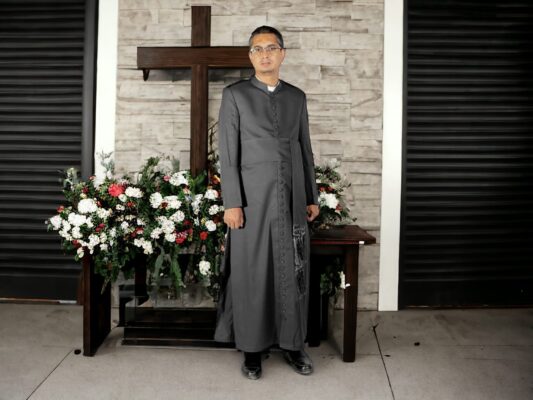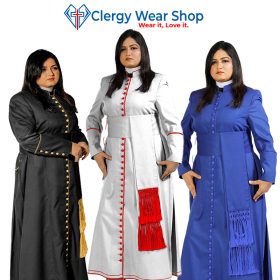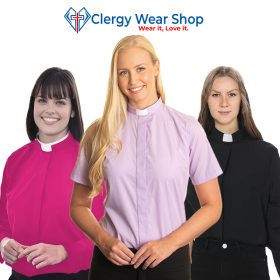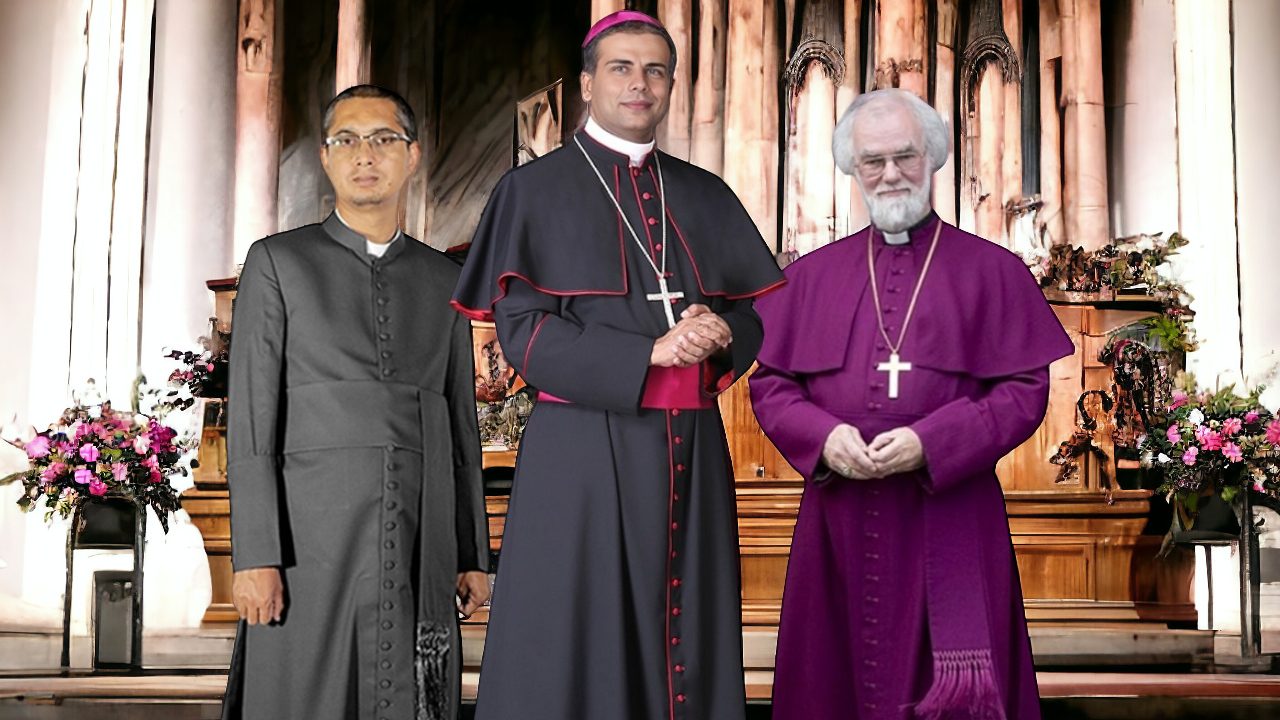Clergy Robes for Men
Perfect Clergy Attire for Special Ceremonies
A Guide to Choosing the Perfect Clergy Attire for Special Ceremonies
Clergy Attire for Special Ceremonies is more than just formal clothing for religious leaders; it symbolizes tradition, reverence, and the authority that comes with spiritual leadership. From the elegant clergy robes to the dignified cassock, these garments represent centuries of religious heritage while evolving to meet modern demands. In this guide, we will dive into the history, purpose, and significance of clergy attire, and explore modern trends that are redefining this sacred wardrobe.
Whether you’re a clergy member preparing for a special service or someone with a deep interest in religious garments, understanding Clergy Attire for Special Ceremonies can help deepen your appreciation for its role in faith and worship. Let’s take a closer look.
The Tradition Behind Clergy Attire
Clergy attire dates back to the early centuries of Christianity, where garments were used to distinguish religious leaders from the laity. Over time, these robes and cassocks became more elaborate, adopting various symbols and colors to reflect the solemnity and significance of the clerical office. Today, clergy attire continues to serve as an important expression of religious identity, respect, and devotion.
Clergy Robes: A Testament to Dignity and Devotion
Clergy robes are among the most recognizable garments worn by religious leaders across various denominations. These long, flowing garments are typically worn during worship services, sacraments, and special occasions such as ordinations or weddings. The purpose of clergy robes is to create a sense of unity among religious leaders and emphasize their role as servants of the church.
Historically, clergy robes were often made of simple fabrics such as wool or linen, but as time progressed, they became more ornate, with velvet, silk, and embroidery commonly used in their construction. These luxurious materials not only signify the importance of religious ceremonies but also convey the dignity of the clergy office.
Clergy robes are often designed to match the liturgical season or event. For example, white robes are worn during Easter to symbolize purity and resurrection, while purple robes are worn during Lent and Advent to represent penitence and preparation. This use of color is an important part of the symbolism behind clergy attire.
Cassock: The Functional Foundation of Clergy Attire
The cassock is a close-fitting, long-sleeved garment that has been a staple of clergy attire for centuries. Often worn underneath clergy robes, the cassock serves both a functional and symbolic purpose. Traditionally, the cassock was worn as everyday attire by clergy members, distinguishing them from laypeople. Today, it is often worn during liturgical services or as part of a full clerical ensemble.

The cassock’s design varies depending on the denomination and region. For example, Roman Catholic clergy typically wear a black cassock with 33 buttons, representing the 33 years of Jesus Christ’s life. In contrast, Anglican clergy may wear a colored cassock, such as purple or red, depending on their rank within the church. The simplicity and uniformity of the cassock emphasize the humility and service-oriented nature of the clergy role.
Despite its traditional roots, the cassock has evolved to meet modern needs. Many clergy members now prefer lightweight, breathable fabrics that offer comfort during long services or in warmer climates. Additionally, cassocks are available in a variety of styles, including double-breasted or front-zipped designs, making them both functional and versatile.
Modern Trends in Clergy Attire for Special Ceremonies
While tradition continues to play a significant role in clergy attire, there has been a noticeable shift toward more contemporary styles and designs in recent years. This evolution reflects the changing needs and preferences of religious leaders who wish to balance reverence with comfort and practicality.
Sustainable and Ethical Fabrics
One of the most significant trends in modern clergy attire is the use of sustainable and ethically sourced fabrics. With the growing awareness of environmental issues, many clergy members are opting for robes and cassocks made from organic cotton, bamboo, or recycled materials. These fabrics not only reduce the environmental impact of production but also provide a softer, more breathable option for daily wear.
In addition to sustainable fabrics, there is also a growing demand for ethically produced clergy attire. Many clergy members prefer garments made by fair-trade manufacturers who prioritize the well-being of workers and the use of eco-friendly production methods. This shift towards ethical fashion is an important way for clergy members to align their personal values with their attire.
Customization and Personalization
Another trend that is gaining popularity in clergy attire is customization and personalization. Many clergy members now seek robes and cassocks that are tailored to their specific measurements and preferences. Custom garments offer a better fit, ensuring comfort during long services, and allow clergy members to express their personal style while still adhering to the requirements of their denomination.
In addition to custom sizing, many clergy members choose to add personalized touches to their attire, such as embroidered initials, religious symbols, or unique color combinations. This trend allows clergy members to feel more connected to their garments and the role they play in their spiritual leadership.
Gender-Inclusive Designs
As the role of women in religious leadership continues to expand across various denominations, there has been a growing demand for gender-inclusive clergy attire. Historically, clergy robes and cassocks were designed primarily for male clergy members, but today, there are more options available for women and non-binary individuals. These garments are designed to fit a wider range of body types and provide the same level of dignity and respect that traditional clergy attire offers.
Gender-inclusive clergy attire reflects the changing landscape of religious leadership and ensures that all clergy members, regardless of gender, can feel confident and comfortable in their roles.
Practical Tips for Selecting Clergy Attire for Special Ceremonies
When selecting clergy attire, it’s important to consider several factors, including the type of services you’ll be leading, the climate in which you’ll be wearing the garments, and your personal preferences. Here are some practical tips to keep in mind:
- Choose the Right Fabric: Consider the climate and the length of time you’ll be wearing the garments. Lightweight fabrics like cotton or linen are ideal for warmer climates, while heavier fabrics like wool or velvet may be better suited for colder seasons.
- Consider Customization: If you’re looking for a perfect fit or have specific design preferences, consider investing in custom clergy attire. This option ensures that your garments fit comfortably and reflect your personal style.
- Pay Attention to Liturgical Colors: Depending on your denomination, you may need to wear different colors during specific liturgical seasons. Make sure your wardrobe includes garments in the appropriate colors for important religious events.
- Focus on Comfort and Functionality: While tradition is important, comfort and functionality should also be a priority. Look for garments with practical features like breathable fabrics, easy-to-use closures, and comfortable fits.
- Invest in Quality: High-quality clergy attire may come with a higher price tag, but it is worth the investment. Quality garments will last longer, maintain their appearance, and provide a sense of dignity during religious services.
Conclusion
Clergy attire serves as a powerful symbol of religious devotion, leadership, and tradition. From clergy robes to cassocks, these garments carry a deep sense of history while evolving to meet the modern needs of religious leaders. As trends like sustainability, customization, and gender inclusivity continue to shape clergy attire, clergy members have more options than ever to find garments that reflect their values, style, and commitment to their faith.
For those looking for high-quality, ethically produced clergy attire, Clergy Wear Shop offers a wide selection of robes, cassocks, and accessories tailored to meet the needs of modern religious leaders. Whether you’re looking for custom-fit garments, eco-friendly fabrics, or personalized designs, Clergy Wear Shop provides the perfect blend of tradition and innovation, ensuring that you look and feel your best during every service.
Frequently Asked Questions (FAQs)
What is the purpose of clergy attire?
Clergy attire serves to distinguish religious leaders from laypeople, signify their authority, and reflect the solemnity of their role in religious services.
What is the difference between a cassock and clergy robes?
A cassock is a close-fitting, long-sleeved garment worn underneath clergy robes or as a standalone garment. Clergy robes are typically worn over the cassock during religious services and are more decorative.
What are the most common fabrics used in clergy attire?
Traditionally, clergy attire was made from wool or linen, but modern garments may also include cotton, silk, velvet, and sustainable fabrics like organic cotton or bamboo.
Can clergy attire be customized?
Yes, many clergy members opt for custom-made robes and cassocks to ensure a perfect fit and to add personalized touches like embroidery or unique color combinations.
What colors are used in clergy attire?
The colors of clergy attire often reflect the liturgical season or event. Common colors include white (purity), purple (penitence), red (the Holy Spirit), and green (growth and life).

 Clergy Cassocks for Men
Clergy Cassocks for Men Clergy Cassocks for Women
Clergy Cassocks for Women Clergy Robes for Women
Clergy Robes for Women Clergy Shirts for Men
Clergy Shirts for Men Clergy Shirts for Women
Clergy Shirts for Women